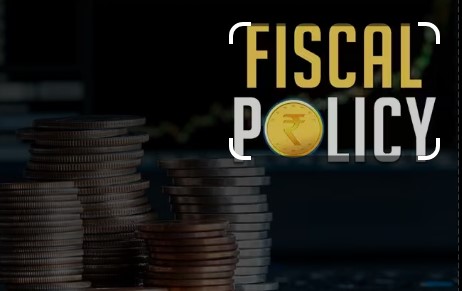Understanding Fiscal Policy: An In-Depth Analysis of Its Components and Impact
Fiscal policy is a crucial tool in the economic toolkit of any government, influencing the overall health and direction of a nation’s economy. It encompasses the government’s decisions regarding taxation and spending, aimed at achieving specific economic objectives. This article delves into the intricacies of fiscal policy, exploring its components, mechanisms, and the impact it has on economic growth, employment, and overall stability.
Definition and Components of Fiscal Policy
Fiscal policy refers to the use of government revenue collection and expenditure to influence the economy. It involves two main components: taxation and government spending.
- Taxation: Governments collect revenue through taxes imposed on individuals and businesses. The types of taxes vary and may include income taxes, corporate taxes, sales taxes, and more. The government can adjust tax rates and policies to either stimulate economic activity or curb inflation. For instance, during economic downturns, reducing tax rates can encourage spending and investment, boosting economic growth.
- Government Spending: The second component of fiscal policy is government spending. This includes expenditures on public goods and services, infrastructure, education, healthcare, and social welfare programs. Governments may increase spending during economic downturns to stimulate demand and create jobs. Conversely, during periods of high inflation or economic overheating, governments might reduce spending to prevent excessive demand.
The Mechanisms of Fiscal Policy
Fiscal policy operates through two primary mechanisms: expansionary and contractionary.
- Expansionary Fiscal Policy: During economic downturns or recessions, governments may implement expansionary fiscal policies to stimulate economic activity. This typically involves lowering taxes and increasing government spending. By putting more money into the hands of consumers and businesses, the government aims to boost spending, increase investment, and create jobs.
- Contractionary Fiscal Policy: In contrast, contractionary fiscal policies are employed during periods of high inflation or economic overheating. The government may raise taxes and cut spending to cool down the economy. This helps reduce overall demand, control inflation, and prevent the economy from reaching unsustainable levels.
Impact of Fiscal Policy on Economic Variables
Fiscal policy has a profound impact on several key economic variables, including economic growth, employment, inflation, and income distribution.
- Economic Growth: The primary objective of fiscal policy is often to promote economic growth. By adjusting tax rates and government spending, governments can influence the overall level of economic activity. Expansionary fiscal policies tend to boost growth by stimulating demand, while contractionary policies aim to prevent the economy from growing too rapidly.
- Employment: Fiscal policy plays a crucial role in shaping the labor market. During economic downturns, increased government spending on infrastructure projects or social programs can create jobs and reduce unemployment. Conversely, contractionary fiscal policies may lead to job losses as government spending decreases.
- Inflation: Controlling inflation is another key goal of fiscal policy. By adjusting taxes and spending, governments can influence the level of demand in the economy. During periods of high inflation, contractionary fiscal policies can help cool down the economy and bring inflation under control.
- Income Distribution: Fiscal policy also affects income distribution within a society. Progressive tax systems, where higher-income individuals pay a larger percentage of their income in taxes, can help reduce income inequality. Similarly, social welfare programs funded by government spending can provide support to lower-income individuals and families.
Case Studies: Fiscal Policy in Action
To illustrate the impact of fiscal policy, let’s examine two case studies from different economic scenarios.
Case Study 1: The Great Recession (2007-2009)
During the Great Recession, many governments around the world implemented expansionary fiscal policies to counter the economic downturn. The United States, for example, passed the American Recovery and Reinvestment Act in 2009, which included tax cuts, and increased government spending on infrastructure, and social programs.
The expansionary fiscal measures helped stabilize the economy, prevent a deeper recession and mitigate the impact on employment. However, the effectiveness of fiscal policy was also influenced by other factors, such as monetary policy and the global economic environment.
Case Study 2: Controlling Hyperinflation in Brazil (1994)
In the early 1990s, Brazil faced hyperinflation, reaching astronomical levels. To address this economic crisis, the Brazilian government implemented a series of fiscal and monetary measures known as the Real Plan. This plan included tight fiscal policies, a new currency (the Brazilian real), and measures to control government spending.
The contractionary fiscal policies played a crucial role in stabilizing prices and restoring confidence in the economy. The Real Plan successfully brought hyperinflation under control, demonstrating the importance of fiscal discipline in restoring economic stability.


